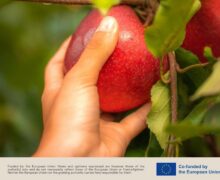Ayurveda in the mythical landscape of the Himalayas

The Ananda in the Himalayas is an insider tip among the world’s best wellness resorts. But it’s much more than an internationally decorated spa. Already the Indian gods have chosen to meditate according to ancient myths for this spiritual place high above the Ganges many centuries ago. The holistic approach and the consistent orientation towards holism can be found in all areas, as well as one of the oldest holistic (whole-body) healing systems in the world: Ayurveda. Developed more than 5,000 years ago in ancient India, this apprenticeship aims to detoxify the body and activate self-healing powers. This includes, in particular, a healthy diet. Ayurveda is an integral part of the wellness concept at Ananda in the Himalayas. From unique massages such as Abhyanga, an ayurvedic full body massage, with abundant oil by two people, to special diets, the Ayurveda experience has been designed with the individual desire for healing, cleansing, relaxation and revitalization.
With qualified Ayurvedic doctors and therapists, treatments ranging from therapeutic massages to more rigorous methods of toxic elimination under the direction of Dr. Raghubansh Mani Singh, the Ayurvedic therapies at Ananda in the Himalayas are deeply rooted in ancient traditions, taking into account contemporary tastes and amenities. The authenticity and commitment to this life system is demonstrated, among other things, in the use of ancient powders, oils, vessels, wooden beds, treatment rituals and therapists trained in traditional Ayurvedic schools. The ayurvedic wellness programs are filled by the in-house Ayurvedic doctor after a detailed consultation at the beginning of the stay, with individual and personalized diet and wellness activities.
A healthy lifestyle requires a customized diet. A nutritious and balanced diet according to an individual’s body type incorporating the principles of Ayurveda is the core to every meal at Ananda. In Ayurveda, each person has an individual composition of three doshas (life energies / body types), from which his constitution and personality emerge. The doshas are called Vata, Pitta and Kapha. They shape the physical appearance, behavior and susceptibility to disease. Vata is the principle of air, which has the characteristics cold and dry. Vata types are usually tall and thin. Like air, Vata is an unsteady principle, which can manifest itself in man in instability and restlessness. In addition, Vata types tend to think too much, since air is also associated with the mind. In Ayurveda, in order to balance Vata, it is advisable to eat many warm and easily digestible foods and to use high quality oils and creams. Seasonal food is especially important for Vata types. Pitta is the fire principle and is associated with a good digestive fire in humans, which also means that you can eat large quantities. Pitta types are mostly muscular and strong and love physical exertion be it in sports or in the form of hard work. Heat and activity account for Pitta. Therefore, it is important that pitta types do not eat too much spicy food as this could easily lead to an excess of fire. Kapha combines the elements of water and earth and is therefore associated with a certain inertia and heaviness. Kapha types have a stable physique. Since Kapha is more of a slow principle, it also expresses peace and stability in man. Kapha types are good at organizing and prefer slow movement and sports. The digestive system is therefore not as strong as in Pitta types, so one should take care not to take too much fat.
Building on this apprenticeship, eating at Ananda in the Himalayas is therefore not just designed for the taste, but is designed to fulfill the needs of these specific body types. With a specially curated menu, which is also coordinated with the in-house Ayurveda doctors and chefs, guests are served meals that are rejuvenating, soulful and at the same time delicious and sumptuous. The cuisine uses fresh products from local organic farms and are low on fat and calories with a special emphasis on whole grains, fresh fruits and vegetables, lean proteins and low-fat dairy products. Artificial salts, colors, flavors or preservatives are avoided.
source: eTN




